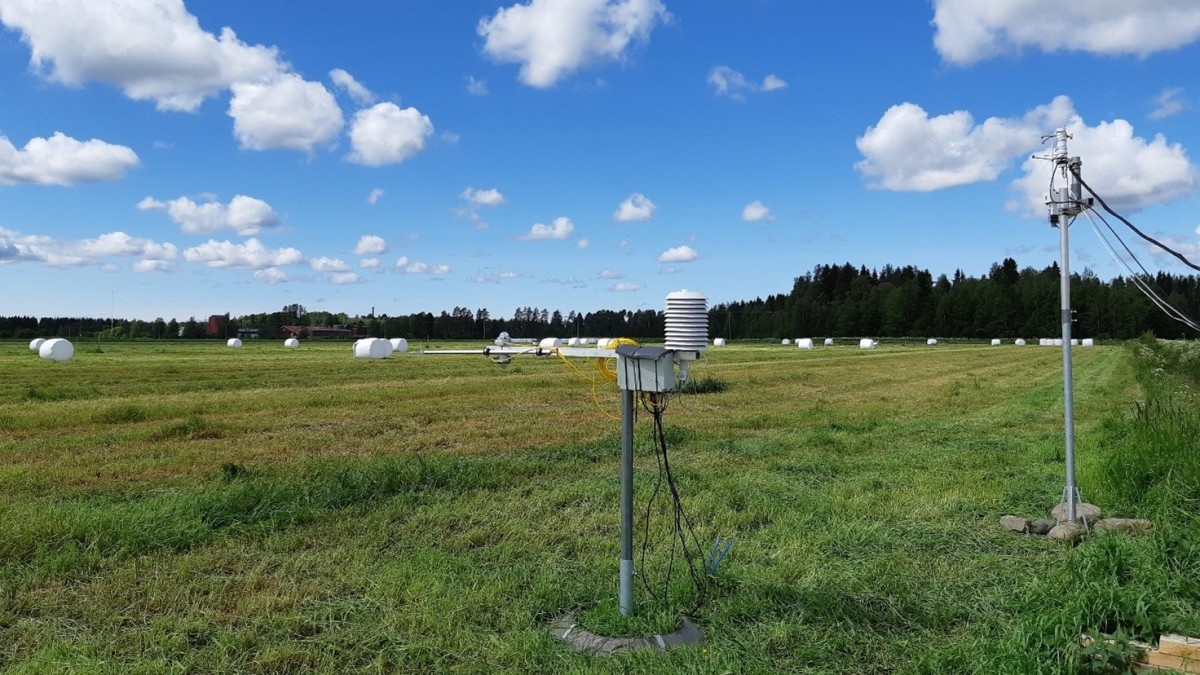A shallow agricultural peatland is a significant source of CO2 and N2O – warm winter increases emissions

In the study, nitrous oxide (N₂O) emissions were for the first time continuously measured with the Eddy Covariance technique from a drained peatland cultivated for grass. Carbon dioxide (CO₂) exchange between the atmosphere and the vegetation and soil was also measured simultaneously.
CO₂ emissions contributed most to the annual greenhouse gas budget but the share of N₂O emissions was also significant (12%). Nitrous oxide is a strong and long-lived greenhouse gas. Globally, agricultural fields are the most significant anthropogenic source of N₂O, and especially, fertilization increases those emissions. Draining, tilling and fertilization increases the decomposition of peat, and therefore, more CO₂ and N₂O are released into the atmosphere.
The results were published in the journal of Agricultural and Forest Meteorology. The study was led by the Finnish Meteorological Institute and done in collaboration with the Natural Resources Institute Finland (Luke).
The study took place in North Ostrobothnia in Ruukki, on the NorPeat Research Platform with controlled subsurface drainage, from November 2019 to December 2021. The study covered two full years, both of which fresh fodder was harvested from the field.The peat thickness of the studied area varied between 15 and 30 centimeters.
Soil thawing and freezing increases N₂O emissions
The study investigated how different weather conditions and agricultural practices affected the greenhouse gas balance of a shallow-drained peatland. Results showed that soil thawing-freezing, fertilization, precipitation and glyphosate application triggered high N₂O emissions.
During the warm winter, N₂O emissions were twice as high as in the colder winter due to multiple freezing-thawing events. These events are known to enhance the microbial activity of N₂O-forming microbes and to liberate gas previously produced and stored in the soil.
Despite multiple emission peaks, the mean annual N₂O emission was lower than the emission factor used in the Finnish national greenhouse gas inventory for this kind of land use. The field was a clear source of CO₂ in both study years, and CO₂ annual emissions were more in line with the national inventory emission factor.
Measurements can help to find ways to reduce emissions from drained agricultural peatlands
Measurements are still ongoing after the period reported here. Since 2022, the site has been cultivated with cereals as part of the grass rotation scheme. The results presented here will help in refining emission factors from shallow-peated fields. However, more measurements are needed to find sufficient understanding.
Drained agricultural peatlands represent approximately 13% of the total cultivated area in Finland, 40% of which has a shallow peat layer, which is defined to be less than 0.6 meters. Although they cover a small area, these peatlands are major sources of greenhouse gases, mainly carbon dioxide and nitrous oxide.
In North Ostrobothnia, about 30% of the arable area are peat fields.Most farms practice grass cultivation as part of their milk and beef production.When looking for ways to reduce climate emissions from peat fields, it is important to measure emissions where grass cultivation is predominant.
Additional information:
Research professor Annalea Lohila, Finnish Meteorological Institute, tel. +358 29 539 5498, annalea.lohila@fmi.fi
Researcher Maarit Liimatainen, Natural Resources Institute Finland (Luke), tel. +358 29 532 2466, maarit.liimatainen@luke.fi
PhD student Stephanie Gerin, Finnish Meteorological Institute, tel. +358 50 477 6801, stephanie.gerin@fmi.fi
The scientific article is available in Agricultural and Forest Meteorology.
Reference: Gerin, S., Vekuri, H., Liimatainen, M., Tuovinen, J-P., Kekkonen, J., Kulmala L., Laurila, T., Linkosalmi, M., Liski, J., Joki-Tokola, E., Lohila, A. Two contrasting years of continuous N2O and CO2 fluxes on a shallow-peated drained agricultural boreal peatland.Agricultural and Forest Meteorology 341 (2023): 109630. https://doi.org/10.1016/j.agrformet.2023.109630
